Bokeo
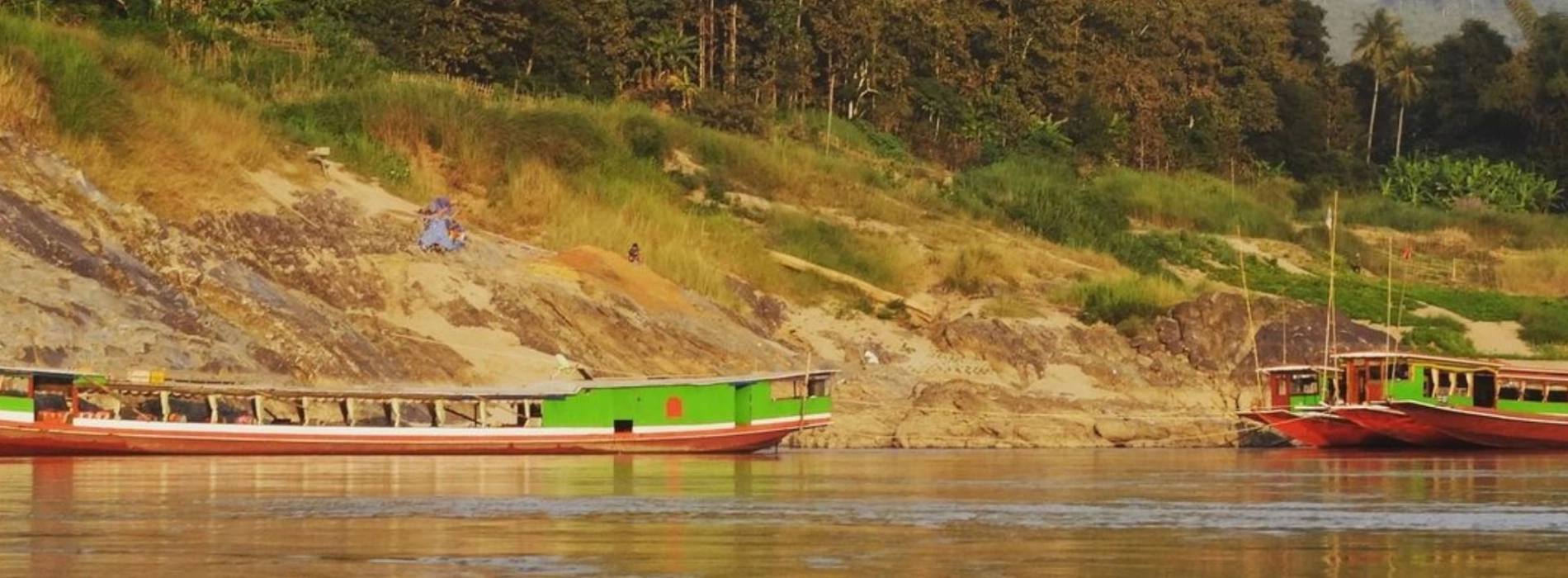
Bokeo is often called a gold mine, and the name of the province reflects that. Located in northern Laos, with Houayxay as its capital, Bokeo is an important commercial and tourist hub in the region.
With its rugged natural beauty and diverse ethnic cultures, this province attracts those seeking unique and exciting travel experiences.

Bokeo attracts those seeking unique and exciting travel experience (Cre: dkeyewitness)
The name “Bokeo” originated when a sapphire mine was discovered and exploited in the Houay Xay district, meaning “gold mine.” With Houay Xay’s strategic location as an important trading center in the region, Bokeo has played a significant role in connecting and facilitating trade between neighboring areas, from Yunnan (China) to Thailand.
The separation of Bokeo from Luang Namtha Province in 1983 created an independent administrative region, allowing for more effective development and management of local resources and culture. As a result, tourism in Bokeo has gradually developed.

Tourism in Bokeo has gradually developed (Cre: themagicofasia)
Read more: Laos excursions
Located in the strategically important “Golden Triangle” region, Bokeo is the smallest province in Laos. It is of considerable importance in this region despite its comparatively small size.
This province is located in the northwest, its administrative center being Houayxay. It borders China's Yunnan to the north, Shan State of Myanmar in the west, Thailand in the southwest, Sayaboury Province in the south, and Luang Namtha Province in the northeast.
Bokeo Province consists of five districts: Houayxay District, Ton Pheung District, Meung Town, Pha Oudom District, and Paktha District. Bokeo has unique natural features and mysterious stories about the land that few people know.

Located in the strategically important “Golden Triangle” region (Cre: walktom)
There are many ways to get to Bokeo. If you travel by air, there are weekly flights to Huay Xay Airport, with a journey time of over an hour. However, this province is in a high mountainous area, and during the cold season at the end of the year, thick fog often makes landing difficult.
You can also travel by water from Luang Prabang, taking a boat or speedboat upstream on the Mekong River. Additionally, you can use a taxi or long-distance bus. Drivers in Laos generally follow traffic laws well: they do not overtake, do not stop unnecessarily, and stay on their side of the road.
The roads in Bokeo are convenient and not too difficult to travel, and the mountain scenery on both sides is beautiful to enjoy.
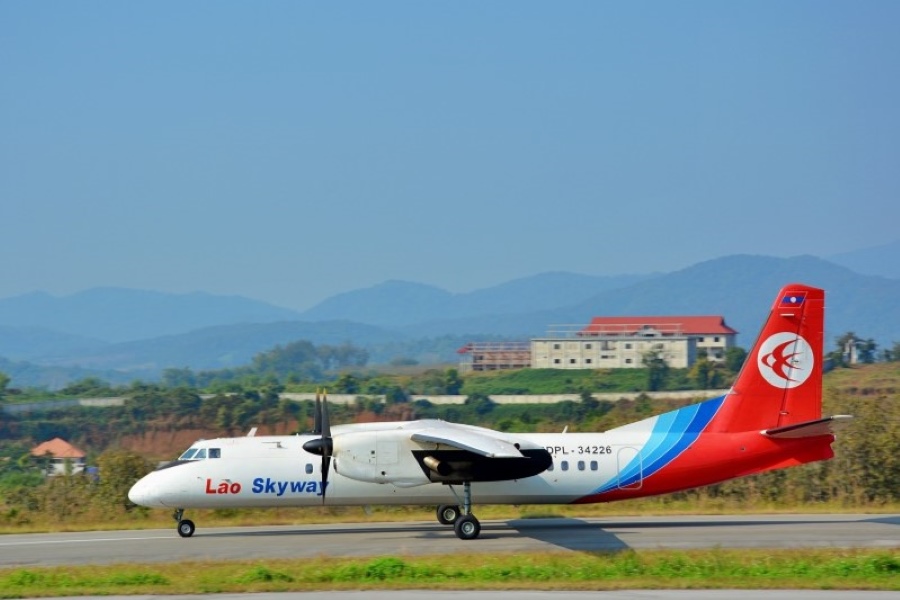
Travel to Bokeo province by plane (Cre: internet)
The Bokeo Nature Reserve is one of the most important conservation areas in Laos. Located in the northern part of this province, this nature reserve was established to protect the natural landscape, biodiversity and rare flora and fauna in the area. According to various sources, the nature reserve was established in 2004 and covers 123,000 hectares of beautiful tropical rainforest.
Bokeo Nature Reserve is famous for its diverse wildlife, including rare species such as the black-cheeked gibbon, Asian elephant and Indochinese tiger. Visitors are particularly impressed by the strong conservation efforts in the area, which aim to prevent deforestation and illegal hunting of these rare animals.
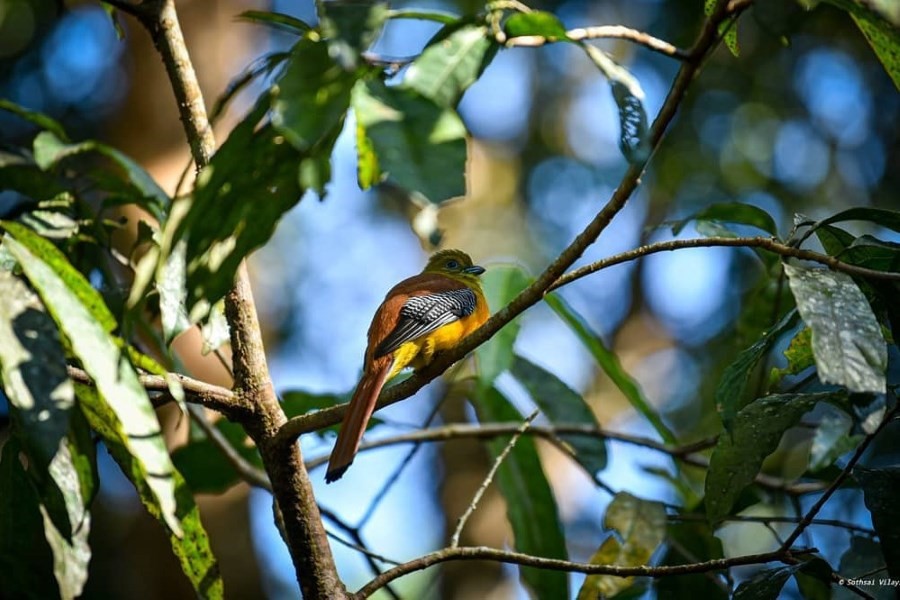
Bokeo Nature Reserve (Cre: sothsai_vilaysane)
Experience a wildlife like the legendary Tarzan, do you want to do that? Going through the primeval forest, staying in a bird's nest perched on an ancient tree, being moved by cable car through the treetops and bathing nude at a height of several meters are the things you will experience when coming to the Gibbon Experience reserve.
In addition, another attraction for tourists is the Gibbon Experience tourism area located within the nature reserve, which began operating and licensing in 2007.
This area is famous for its treehouse accommodations and visitors moving around by zip-lining. Along with this, the goal of the tourism area is to conserve nature and create employment opportunities for local workers. It aims to build eco-tourism based on exploring nature and environmental protection.

The Gibbon Experience (Cre: placesileftmyheart)
As the proud capital of Bokeo province, Houayxay sits on the banks of the Mekong River, holding a crucial position as a border between Laos and Thailand. Houayxay serves as a vital commercial and tourism hub in the region.
Houayxay is a stopover for tourists who enjoy breathtaking scenery and engage in activities such as cycling, long-distance walking, or kayaking. Additionally, Houayxay is famous for its variety of tropical fruits, thanks to the fertile soil enriched by sediment deposition.
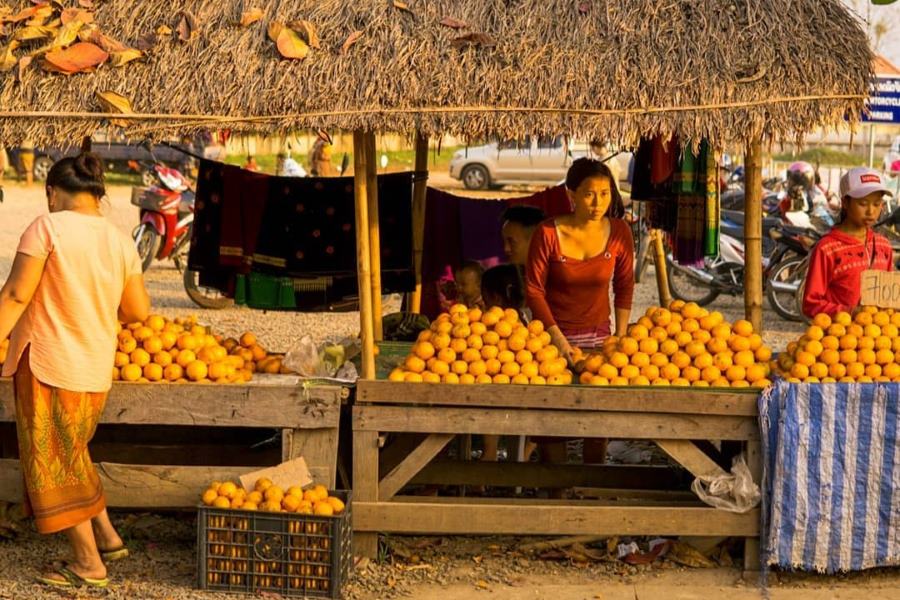
Houayxay, Bokeo province is famous for its variety of tropical fruits (Cre: azreenyunus10)
Wat Jom Khao Manilat is a wooden Shan-style temple built in 1880. This religious site features colorful three-tiered roofs and intricate floral decorations that attract tourists.
Visitors can also see a stone inscription left by Prince Chiang Kong in 1458. The temple has many stairs, and from its grounds, one can enjoy a peaceful and romantic view of the Mekong River. The monks here are quite young, and visitors can come to the temple at 6 p.m. to listen to their chanting.

Wat Jom Khao Manilat is a wooden Shan-style temple built in 1880 (Cre: wiki2.org)
In 2024, the population of Bokeo is approximately over 200 thousand people. Despite being the smallest province in Laos, Bokeo is home to up to 34 different ethnic minority groups, with the majority being Hmong, Lahu, Yao, Akha, and Ta Lue ethnic groups.
This diversity allows visitors to experience the distinct characteristics of each ethnic group, with each group bringing its own unique colors and cultures.
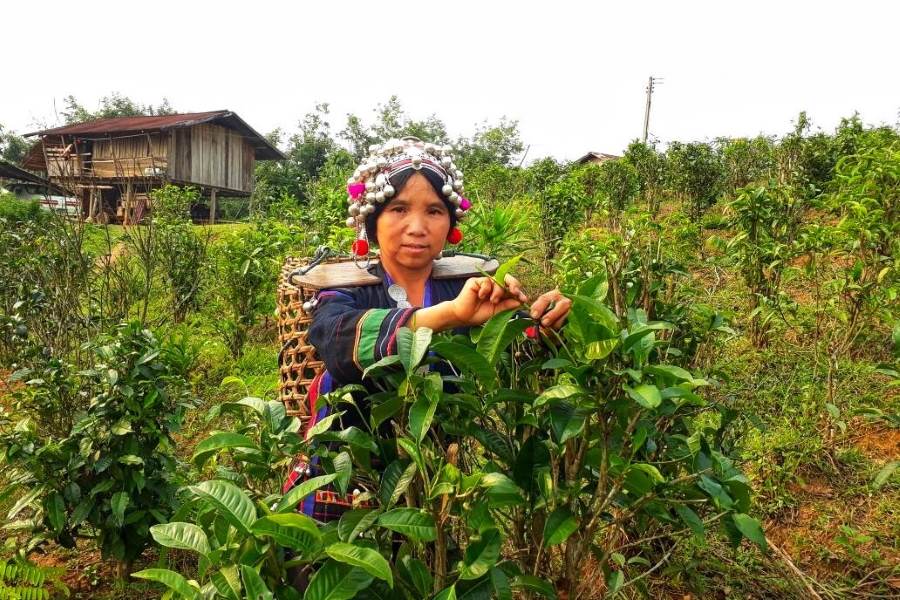
The population of Bokeo is approximately over 200 thousand people (Cre: mrlg.org)
When visiting Bokeo, tourists can experience the distinctive cuisine of Laos. Additionally, visitors can also enjoy kanom jeen or rice vermicelli from Ban Khao Pun - a village renowned for its traditional noodle making. Local residents often mix kanom jeen with phla raa - their famous fermented fish sauce, or it can be served with various other dipping sauces.
When exploring Ban Khao Pun, you can experience and witness their noodle-making process. These noodles are also exported to Thailand and are a popular choice as gifts for tourists.
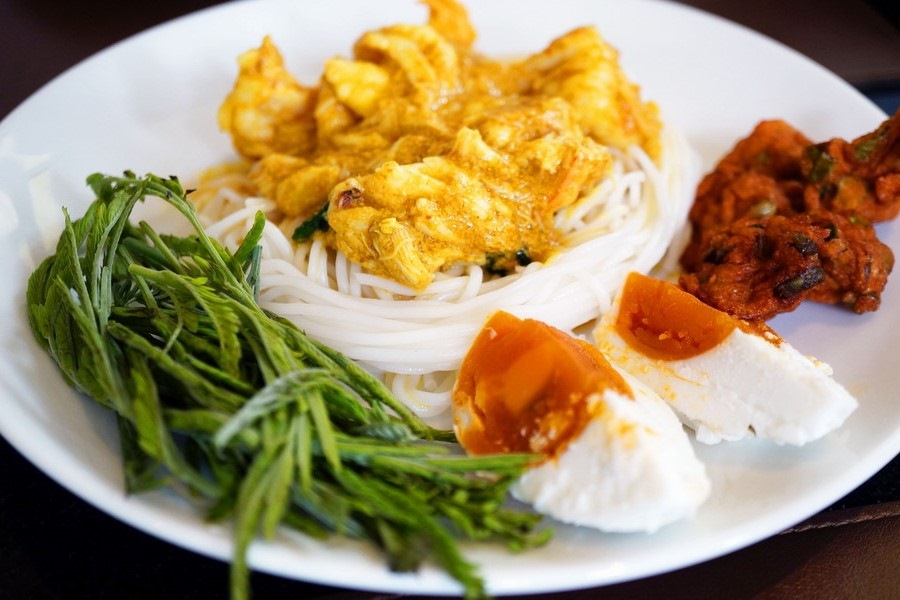
Experiencing the kanom jeen cuisine in Bokeo province (Cre: sanook.com)
While in Bokeo, you can also visit Muang Bokeo Market, located on Saykhong Road. This market area gathers various types of food, groceries, handicrafts, etc., rich in the local lifestyle. The best experience is to visit the market in the morning to witness the bustling atmosphere of the market.
Laos has a tropical monsoon climate, consisting of two seasons: the dry season (from November to April) and the rainy season (from May to October). Each season has its peculiar character. The rainy season is distinguished by a heavy growth of vegetation; the temperature is generally mild, though the weather is often inconvenient and the state of the roads precarious.

The best time to visit Bokeo province (Cre: vkutsey)

Some tips when traveling to Bokeo (Cre: pabloontrip)
For tourists who love to explore nature and unique ethnic cultures, Bokeo is an interesting choice. With more than 34 ethnic minority groups, tourists can explore the unique culture of each ethnic group and the common national identity of Laos. Bokeo is a worthy destination in the tourist itinerary of Laos.
Read more: Laos tours 10 days